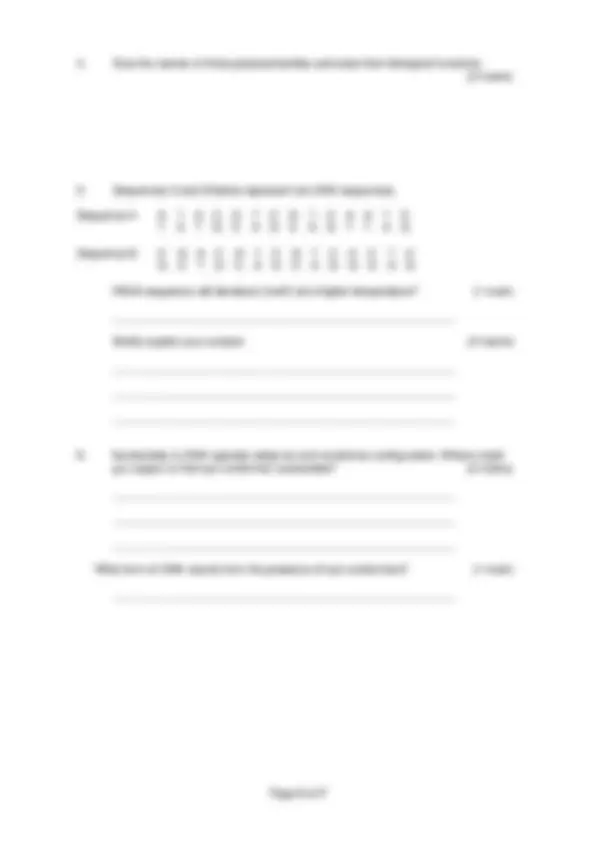





Study with the several resources on Docsity

Earn points by helping other students or get them with a premium plan


Prepare for your exams
Study with the several resources on Docsity

Earn points to download
Earn points by helping other students or get them with a premium plan
Community
Ask the community for help and clear up your study doubts
Discover the best universities in your country according to Docsity users
Free resources
Download our free guides on studying techniques, anxiety management strategies, and thesis advice from Docsity tutors
Fischer Projection, Anomeric Carbon, Projection of a Pyranose Ring, Furanose Ring, Pyranose Ring, Chargaff?S Rules, Non Polar Aliphatic, Basic Structure, Peptide Bond, Fatty Acid are some points from questions of Behavioural Ecology subject.
Typology: Exams
1 / 7

This page cannot be seen from the preview
Don't miss anything!




Rhif Cyfeirio‟r Myfyriwr/ Student Reference Number: ……………………………………………
Dyddiad/Date ………………………………………………
Ystafell Arholiad/Examination Room ………………………………………………
Rhif y Sedd/Seat Number ………………………………………………
Fold over and stick down/plygwch y gornel drosodd
Cyfenw/Surname .............................................
Enwau Cyntaf/ Forenames ......................................................
........................................................................
SECTION A (50 marks)
a) On the diagram above clearly label the anomeric carbon. (1 mark)
b) Which of the following is a correct description of this ring form: (1 mark)
i) A Fischer projection of a pyranose ring ii) A Fischer projection of a furanose ring iii) A Haworth projection of a pyranose ring iv) A Haworth projection of a furanose ring
(a) What is the general name given to this type of sugar to indicate that it is made up of two monomer units? (1 mark)
(b) Fill in the gaps with the appropriate numbers:
The two glucose units are joined by an α___, ___ linkage (1 mark)
Nucleotide Function
ATP Energy storage and exchange GTP
Acyl group donor
FAD
__________________________________________________________ (1 mark)
__________________________________________________________ (1 mark)
__________________________________________________________ (1 mark)
__________________________________________________________ (1 mark)
__________________________________________________________ (1 mark)
__________________________________________________________ (1 mark)
Amino acid Group
Valine Non-polar aliphatic Phenylalanine
Polar
Arginine
What is the name of the enzymatic activity responsible for forming the peptide bond during translation? (1 mark)
Give the names of the two models proposed to explain cooperative O 2 binding by haemoglobin.
__________________________________________________ (1 mark)
__________________________________________________ (1 mark)
SECTION B (50 marks)
ANSWER ONE QUESTION IN A SEPARATE ANSWER BOOK